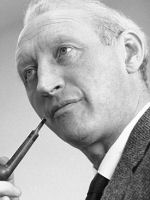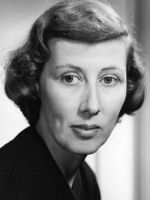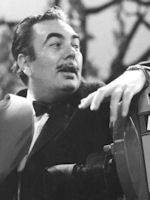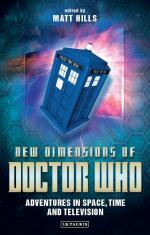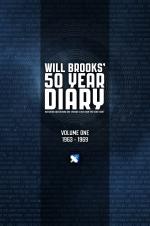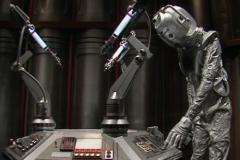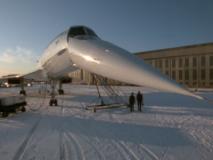 Part twenty-seven in our series telling the story of the creation of Doctor Who, and the people who made it happen.After the travails of recent weeks, with the abandonment of the original pilot and the cold feet of the Controller of BBC1, as October began to draw to a close Doctor Who was looking a little safer. It was guaranteed a run of at least 13 episodes, and the second of those had now been recorded, with rehearsals due to begin on the third. Work was also continuing on pre-production and scripting for other serials, most immediately the seven-episode adventure by writer Terry Nation, which was to come second in the running order.
Part twenty-seven in our series telling the story of the creation of Doctor Who, and the people who made it happen.After the travails of recent weeks, with the abandonment of the original pilot and the cold feet of the Controller of BBC1, as October began to draw to a close Doctor Who was looking a little safer. It was guaranteed a run of at least 13 episodes, and the second of those had now been recorded, with rehearsals due to begin on the third. Work was also continuing on pre-production and scripting for other serials, most immediately the seven-episode adventure by writer Terry Nation, which was to come second in the running order.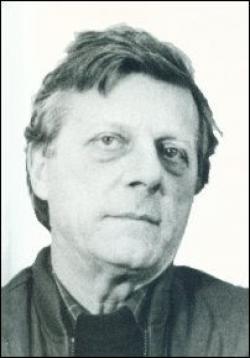
This would include creatures called the Daleks -
Doctor Who's first race of alien monsters. On
Sunday 27th October 1963, exactly fifty years ago today, draughtsman
A. Webb drew up the earliest surviving formal designs for the Daleks, from the plans of designer
Raymond Cusick. These would be sent to Shawcraft Models, to be constructed ready for use by 20th November. Nobody at the time knew it, but a legend was being born.
Nation's serial was to be an important one for the young series. Neither producer
Verity Lambert nor story editor
David Whitaker had been entirely keen on the opening story,
An Unearthly Child by
Anthony Coburn, but by the time they both joined the series it was too late to change it. Nation's scripts would therefore be the first serial they had entirely sought out and commissioned themselves, with Whitaker having selected Nation after being impressed by his work on the ITV science-fiction anthology series
Out of this World. Nation had initially been unwilling to work on the programme, but after parting with his previous employer, comedian
Tony Hancock, had taken up the offer. Nation had been able to deliver his scripts quickly and write efficiently within the format of the programme, and Lambert and Whitaker had been impressed with his work. With no other serial in as ready a state as Nation's, his tale of post-apocalyptic struggle on a distant alien world was promoted to second in the young programme's running order.
At seven episodes, Nation's scripts would take up a sizeable chunk of the 13-episode run that
Doctor Who had been given in which to prove itself by a somewhat reluctant BBC1. The Head of Serials,
Donald Wilson, disliked Nation's scripts and did not want Lambert to use them, but she successfully argued that nothing else was ready. Wilson's superior, the Head of Drama
Sydney Newman, did not see the scripts or any designs for the serial, as by this stage he was taking a less hands-on role in the production of the programme that he himself has initiated - he did not see the Daleks until the viewers themselves did, in December.
Cusick had not been the designer originally allocated to the story. Future Hollywood film director
Ridley Scott, then also working for the design department of the BBC, had orignally been given the task, but problems with his availability meant that it was Cusick who had to come up with a design to match the description in Nation's script:
Hideous machine-like creatures. They are legless, moving on a round base. They have no human features. A lens on a flexible shaft acts as an eye. Arms with mechanical grips for hands. The creatures hold strange weapons in their hands.
Nation was keen to get away from traditional science-fiction film images of monsters being obviously men dressed up in suits, but when Cusick sought advice on how to realise this concept from
Doctor Who's veteran associate producer
Mervyn Pinfield, he was dismayed to hear Pinfield suggest just that. Pinfield had been assigned to
Doctor Who particularly for his ability to advise on technical matters, and his suggestion for the Daleks was a budget-conscious one. He told Cusick to design a costume of a large cardboard tube around the actor's torso, with other tubes around the arms and legs, and for the whole ensemble to be painted silver.
Cusick found greater inspiration when he spoke directly to Nation. The scriptwriter had been enthused by seeing a performance by the Georgian State Dancers, in which the female members of the Soviet group wore long dresses entirely concealing their legs and feet, and thus seemed to glide across the floor without any visible method of movement. Cusick, inspired by this, experimented with various designs all based around the idea of a seated operator entirely enclosed by the outline of the design, with no visible arms or legs.
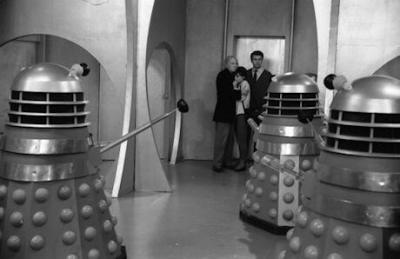
Cusick worked throughout October on refining the design, consulting with other experts in the field such as
Bernard Wilkie and
Jack Kine of the BBC Visual Effects Department. By 27th October, fifty years ago today, he had completed his design, to be constructed by the outside company Shawcraft Models. This was still not quite the final design - after the designs had been delivered to Shawcraft, the company's boss
Bill Roberts made his own refinements to make the props easier, cheaper, and more efficient to construct within the time and budget available. Changes Roberts made included having the gun and sucker arms mounted on the same level, rather than at different levels as in Cusick's design. But beyond such comparatively minor changes, the design of the Dalek, the iconic image familiar to millions even fifty years later, all stems from the designs of October 27th.
Shawcraft would have £750 to construct the four Dalek props which would be needed for the making of Nation's serial, but the appearance of the creatures was not the only element that was being developed through October. The Dalek serial had been assigned two directors - the more experienced
Christopher Barry would handle the majority of the serial, while newcomer
Richard Martin would also direct some episodes, to help learn his trade. Barry had initially approached the Post Office's Joint Speech Research Unit to investigate providing voices for the Dalek creatures, but wasn't quite able to obtain what was wanted. Martin then approached a body which had already worked on
Doctor Who, providing the theme tune - the BBC's own Radiophonic Workshop, based at Maida Vale.
The workshop's
Brian Hodgson met with Martin, who explained the type of grating, metallic voice that was wanted. Hodgson, inspired by a robot voice he had previously created for a radio serial called
Sword From the Stars, came up with the idea of using a ring modulator to process an actor's voice and create the kind of effect that was desired. Hodgson and Martin experimented with using the modulation process on the voice of actor
Peter Hawkins, concentrating on the vowel sounds where the modulation was most effective. The trial session took place in Studio G at Lime Grove Studios on
24th October 1963, when Cusick's designs for the creatures they were coming up with a voice for had still not been completed. The two elements would come together to create a sensation - although nobody, of course, knew that at the time.
Doctor Who had still to prove itself - but with less than a month to go until the transmission of its first episode, there was not long to wait to see what the general public would make of this programme that had been enduring such a struggle to reach the screen. Meanwhile, production continued both on the first serial and on the Dalek adventure - from
Monday 28th October,
Waris Hussein and his cast would begin rehearsing the third episode of the programme,
The Forest of Fear, while on the same day at the BBC Television Film Studios at Ealing pre-filming work began on
The Daleks, using 35mm film for stunts, model work and other complicated sequences.
SOURCES: Doctor Who Magazine issue 331 (Panini Comics, 25 June 2003); Doctor Who Magazine issue 460 (Panini Comics, June 2013);
Dalek 6388 - 1: The Dead Planet Compiled by:
Paul Hayes
 Cineworld Shaftesbury Avenue are offering readers of Doctor Who News two tickets to the screening of The Day of the Doctor.
Cineworld Shaftesbury Avenue are offering readers of Doctor Who News two tickets to the screening of The Day of the Doctor. 
 The twenty-eighth episode in our series telling the story of the creation of Doctor Who, from conception to broadcast.
The twenty-eighth episode in our series telling the story of the creation of Doctor Who, from conception to broadcast.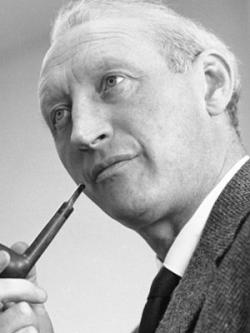 One of the best ways for the BBC to promote its programmes in the 1960s was through its own weekly listings magazine, the Radio Times. The magazine was almost as old as the BBC itself, having been launched in 1923, just one year after the BBC began transmissions. In 1963 it turned forty, and was already something of a national institution. Until the deregulation of the TV and radio listings industry in the early 1990s, it was the only place where readers could find detailed information about all of the BBC's programmes for the full week ahead. It was therefore one of the UK's best-selling magazines, most of the population had at least a passing familiarity with it, and it was both a valuable source of revenue for the corporation (unlike on television or radio, the BBC could sell advertising in the pages of the Radio Times) and a tremendous source of publicity, of immense value in promoting programmes.
One of the best ways for the BBC to promote its programmes in the 1960s was through its own weekly listings magazine, the Radio Times. The magazine was almost as old as the BBC itself, having been launched in 1923, just one year after the BBC began transmissions. In 1963 it turned forty, and was already something of a national institution. Until the deregulation of the TV and radio listings industry in the early 1990s, it was the only place where readers could find detailed information about all of the BBC's programmes for the full week ahead. It was therefore one of the UK's best-selling magazines, most of the population had at least a passing familiarity with it, and it was both a valuable source of revenue for the corporation (unlike on television or radio, the BBC could sell advertising in the pages of the Radio Times) and a tremendous source of publicity, of immense value in promoting programmes.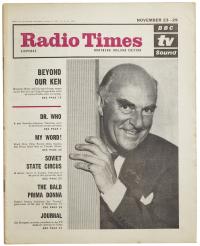
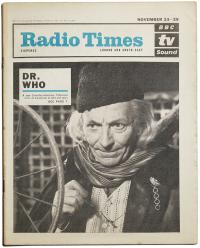



 This would include creatures called the Daleks - Doctor Who's first race of alien monsters. On Sunday 27th October 1963, exactly fifty years ago today, draughtsman A. Webb drew up the earliest surviving formal designs for the Daleks, from the plans of designer
This would include creatures called the Daleks - Doctor Who's first race of alien monsters. On Sunday 27th October 1963, exactly fifty years ago today, draughtsman A. Webb drew up the earliest surviving formal designs for the Daleks, from the plans of designer  Cusick worked throughout October on refining the design, consulting with other experts in the field such as
Cusick worked throughout October on refining the design, consulting with other experts in the field such as 
 Before Baverstock had departed on three weeks' leave, in his memo to
Before Baverstock had departed on three weeks' leave, in his memo to 
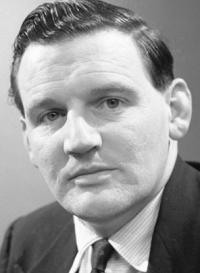 That Friday evening, the second ever episode of Doctor Who to be made - the new attempt at the first episode - was due to be recorded in Studio D at Lime Grove, the same studio as the first attempt and, much to the chagrin of many of those working on the programme, allotted as Doctor Who's main studio for the foreseeable future. The production had the same cast, same director and mostly the same sets, although (as noted in the
That Friday evening, the second ever episode of Doctor Who to be made - the new attempt at the first episode - was due to be recorded in Studio D at Lime Grove, the same studio as the first attempt and, much to the chagrin of many of those working on the programme, allotted as Doctor Who's main studio for the foreseeable future. The production had the same cast, same director and mostly the same sets, although (as noted in the 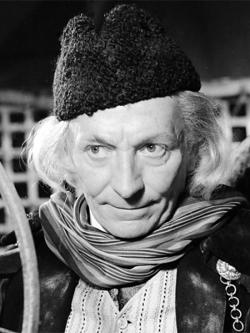 What effect this had on Doctor Who's production team on the very day they were preparing to remount their opening episode is unknown. However, Sydney Newman instantly leapt to the defence of the show he had done so much bring to life. Having been given a copy of Baverstock's memo, he immediately wrote a reply pointing out that it had never been intended for the cost of the TARDIS interior set to be spread across 13 episodes - Doctor Who had originally been conceived and planned as having a 52-week run, and the costs of the set were to be covered across 52 weeks rather than 13.
What effect this had on Doctor Who's production team on the very day they were preparing to remount their opening episode is unknown. However, Sydney Newman instantly leapt to the defence of the show he had done so much bring to life. Having been given a copy of Baverstock's memo, he immediately wrote a reply pointing out that it had never been intended for the cost of the TARDIS interior set to be spread across 13 episodes - Doctor Who had originally been conceived and planned as having a 52-week run, and the costs of the set were to be covered across 52 weeks rather than 13.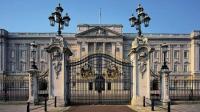 A party is to be held at Buckingham Palace next month to celebrate the 50th anniversary of Doctor Who,
A party is to be held at Buckingham Palace next month to celebrate the 50th anniversary of Doctor Who, 
 A Norfolk man who made more than £35,000 by selling fake autographs of celebrities including Doctor Who stars has been jailed.
A Norfolk man who made more than £35,000 by selling fake autographs of celebrities including Doctor Who stars has been jailed. 
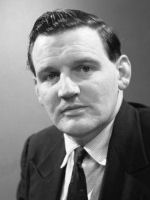 In response to Wilson's memo, on Wednesday 16th October Controller of Programmes
In response to Wilson's memo, on Wednesday 16th October Controller of Programmes 
